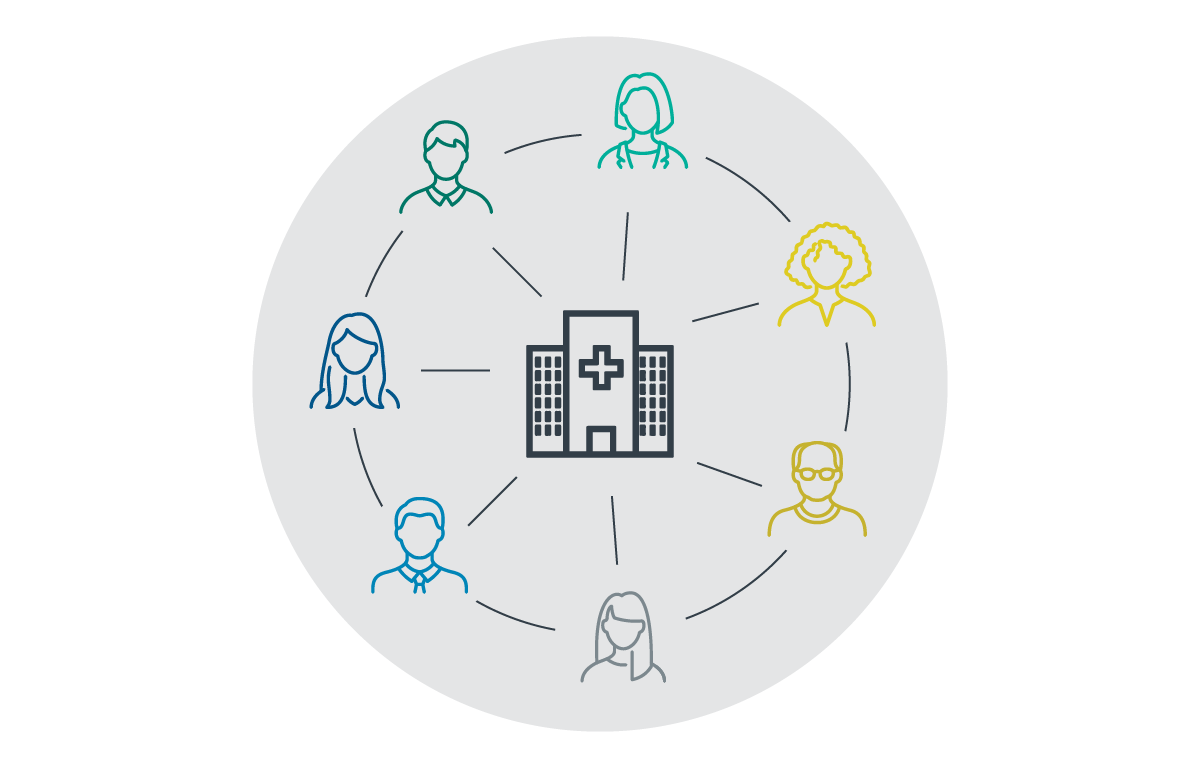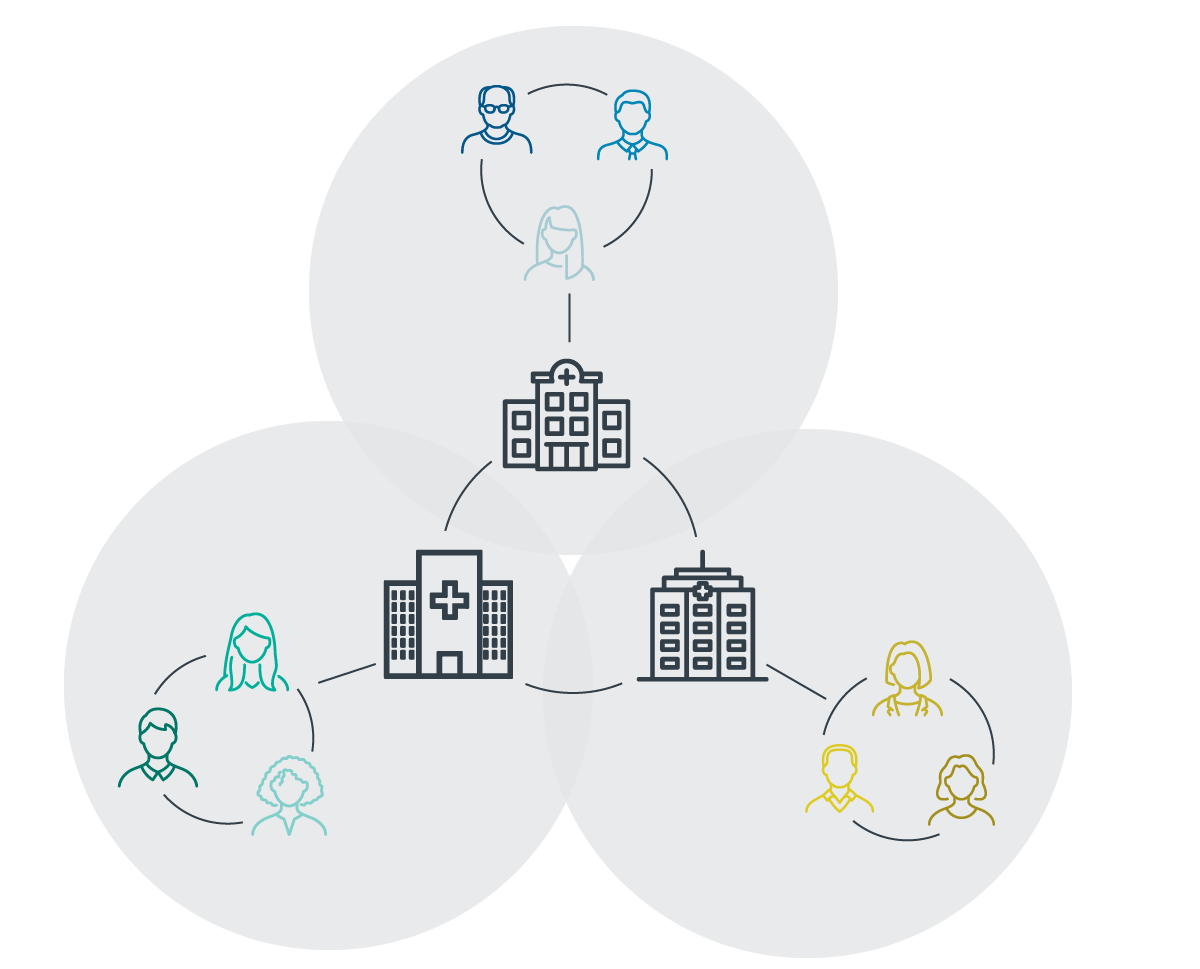
TAG, Inc. Selected as One of the MOST RELIABLE Firms in St. Louis
March 28, 2023
TAG, Inc. to Attend HFMA and AHRMM 2023 Conferences
June 9, 2023Does your health system operate a centralized Accounts Payable (AP) department or run decentralized departments and systems?
Is your current structure effective and efficient, or is money being leaked through your AP operations?
Understanding how your health system’s AP operates and the benefit of different operating models is essential to decision-making. It takes AP one step closer to obtaining a holistic view of its function, what it could improve upon, and where it already excels.
What AP Structure is your Health System Using?
Centralized AP
A truly centralized AP exists when all AP functions and staff across all entities inside your health system occur under one department. This department utilizes one system and standardizes processing invoices, payments, and reimbursements.
A growing trend among health systems is centralizing AP by establishing a shared service center (SSC).

Decentralized AP
As the name implies, a decentralized AP operates with multiple AP departments, each using its system. The departments are often segregated by an entity, entity type (e.i. medical groups or physician practices), or region (such as a newly acquired or merged health system).
A decentralized AP can vary to different degrees. For example, one health system may have multiple AP departments but share the same system for invoicing and payment processing. Another example is one AP department in a health system that utilizes multiple ERP systems to process invoices and payments for different entities.

Advantages of a Centralized AP
Removes redundancies and increases efficiency.
With disparate departments comes several people taking on the same function, such as managing the vendor master and collecting statements.

To truly understand where redundancies and process gaps exist, a process flow map is essential to resolve operational hiccups. To get a holistic view of your entire procure to pay process and the areas leaking funds, turn to TAG for our industry-leading recovery audit and process mapping.
Reduces overhead and operating costs.
Several AP departments usually have more staff and overhead for the health system. Operating under one centralized department allows AP to remove redundancies, thus lessening staffing and overhead costs.
Furthermore, a study by Ideal AP found that organizations that utilize centralized accounts payable operations spend $2.00 less to process a payment than decentralized AP.
Creates a single source of truth for invoice and payment data
One centralized department using a singular workflow means all invoice and payment data should be in one location, creating a single source of truth.
Disclaimer: We know not all information AP may need to complete payments is housed in one system due to other departments funneling in data such as purchase orders and contract terms. However, a centralized AP can get your organization one step closer by collecting all transactional information in your ERP system and updating records as they discover discrepancies.
Consistency across all invoice and payment data makes it easier to streamline processes and workflows. For example, data input rules across your health system create consistent expectations and add a step to prevent future payment errors.
Lowers the risk of payment errors
Fewer Duplicate Payments
A centralized AP with a single source of truth and consistent data entry will reduce the number of duplicate payments made. Any payment system should catch duplicate entries of invoice numbers, thus reducing the number of duplicate payments.
Less Missed Payments
A centralized AP makes it easier for vendors to consolidate invoices and streamlines internal cash flow management.
One-route decision-making
One department means one organizational structure for decision-making and operations. A clear path to answers and decisions that affect payment timing is less burdensome than trying to align with disparate policies and procedures from a decentralized department.
Increases the likelihood of new technology adoption
When operations are centralized, health systems can take full advantage of technology, such as adding a workflow approval system or even robotic process automation (RPA). Advanced technology further increases process efficiency throughout the entire process, including AP.
Advantages of a Decentralized AP
Allows for all operations to continue during times of change, such as mergers and acquisitions
Each legacy health system utilizes its own ERP system with its own set of controls and processes. When merging with new health systems or hospitals, consolidating systems is complex and can take significant resources. Keeping legacy systems in place allows the health system to continue making payments and obtaining the necessary supplies and services.
More accurate payment processing
AP staff in a decentralized system may have closer relationships with its vendors – particularly smaller, local vendors. Harnessing these relationships keeps vendors honest and trustworthy, likely saving your health system. For example, vendors may be more likely to ensure credits are being deducted when they value your working relationship.
Decreases the time it takes to update processes
Smaller AP departments mean that updating processes or policies should occur more quickly. For example, updates to data entry rules, such as keying or not keying spaces, can be simple fixes among a small group of team members.
For the last 10+ years, the trend of moving toward a centralized AP department or shared service centers has been growing. At TAG, we acknowledge that no solution fits every health system's needs. However, we are here to help evaluate your need and its effect on contract pricing, process optimization, and payment errors. Reach out to learn how we can optimize your AP system at no cost.



